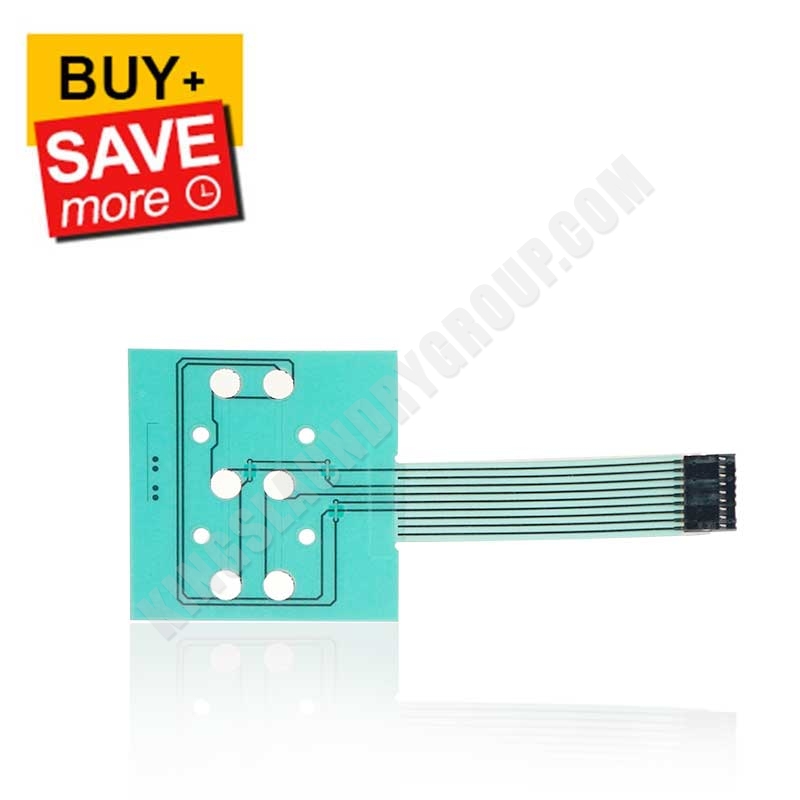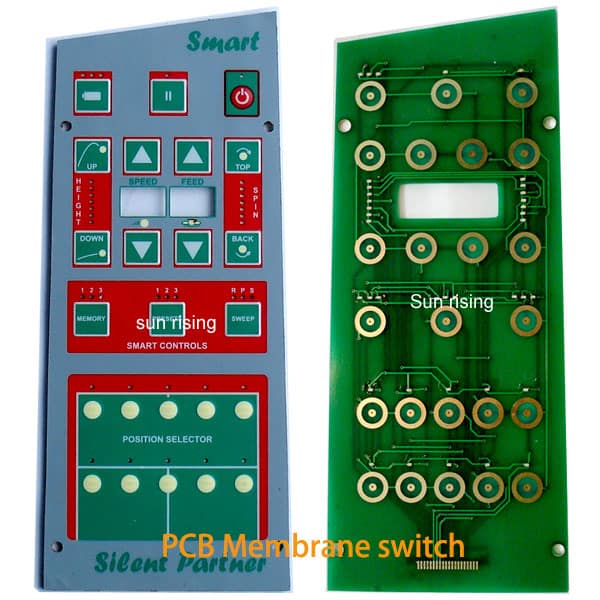Membrane Switches vs. Conventional Switches: What You Need to Understand
Membrane Switches vs. Conventional Switches: What You Need to Understand
Blog Article
Why Membrane Switches Are Important for Resilient Control Systems
Membrane layer switches play a critical role in ensuring the sturdiness and reliability of control systems throughout different markets. Their distinct construction allows them to withstand difficult environmental factors such as moisture, temperature level extremes, and physical wear. This resilience not just expands the life expectancy of the systems they offer yet also reduces maintenance demands. As we check out the complex advantages of membrane switches, it comes to be obvious that their relevance goes beyond plain functionality, influencing user experience and operational efficiency. What additional implications do these characteristics hold for the future of control system layout?
Introduction of Membrane Layer Buttons
Membrane switches are functional and trusted parts frequently made use of in various electronic control systems. These switches include several layers, including a graphic overlay, a spacer layer, and a published circuit layer. The visuals overlay provides both functional and visual layout, while the spacer layer ensures that the switches are activated only when pushed. The published circuit layer consists of conductive traces that finish an electric circuit when the membrane is pushed, enabling the device to reply to user inputs.
Membrane layer switches are typically preferred in applications needing a compact and lightweight design, making them excellent for portable tools, clinical equipment, and industrial equipment. They can be tailored to fulfill certain customer requirements and can include various features such as backlighting, responsive responses, and numerous colors. Membrane layer buttons are resistant to dirt, dampness, and pollutants, making them suitable for settings where sturdiness is essential.
Benefits of Durability
In several applications, the resilience of membrane changes offers substantial advantages that boost their general efficiency and reliability. These buttons are developed to withstand extreme settings, making them ideal for usage in demanding problems such as high humidity, severe temperatures, and exposure to chemicals. Their durable building aids to stop damages from physical influence, guaranteeing long-lasting performance and minimizing the demand for constant substitutes.
Additionally, membrane layer switches are immune to put on and tear, which is important in applications where regular communication happens. This durability converts to decrease upkeep costs, as organizations take advantage of lowered downtime and less service interruptions. The encapsulated layout of membrane changes shields internal parts from dust and wetness access, more adding to their life expectancy (membrane switch).
One more advantage is their ability to preserve constant efficiency gradually. With a high resistance for mechanical anxiety, these buttons maintain their responsive comments and electrical honesty, making sure individual complete satisfaction. Ultimately, the longevity of membrane layer switches not just improves functional effectiveness however likewise fosters self-confidence in their dependability, making them a favored option for control systems throughout various markets.
Applications in Numerous Industries
Long lasting control systems utilizing membrane buttons locate substantial applications across a series of markets, each profiting from the unique qualities these switches supply. In the medical field, membrane layer buttons are important for tools such as individual screens and diagnostic tools, where dependability and convenience of cleansing are paramount. Their resistance to dampness and impurities ensures they maintain capability in sterilized environments.
The vehicle market leverages membrane layer buttons for control panel controls and infotainment systems, where they provide streamlined, low-profile interfaces that boost user experience. These buttons are likewise designed to stand up to rough conditions, including direct exposure to extreme temperature levels and vibrations.
In industrial settings, membrane buttons are typically made use of in equipment control board, using tactile responses and toughness required for high-usage applications. Their capacity to resist chemicals makes them ideal for producing environments where spills and pollutants are constant.

Customer electronic devices, such as cooking area home appliances and remotes, likewise use membrane buttons for their flexibility and cost-effectiveness. Generally, the flexibility and durable nature of membrane switches make them important throughout numerous sectors, ensuring reliable procedure and longevity in control systems.
Style and Aesthetic Charm
While functionality is extremely important, the layout and aesthetic appeal of control systems furnished with membrane layer buttons play a crucial duty in user engagement and overall experience (membrane switch). The visual layout of these buttons can dramatically influence individual understanding and communication. A properly designed membrane layer switch enhances the attractiveness of the device, making it much more appealing to individuals and cultivating a connection between the user and the product
Membrane changes supply a large amount of versatility in design, enabling makers to weblink customize graphics, shades, and structures to align with brand identification and product appearances. Using vibrant colors and distinct the original source patterns can draw focus, while tactile responses can enhance the customer's interaction with the device. Furthermore, the ability to integrate LED indicators and backlighting right into the membrane layer switch style provides both functional and aesthetic benefits, boosting exposure and usability in various atmospheres.

Enhancing Customer Experience

Additionally, membrane layer buttons can be customized to incorporate graphical interfaces, improving functionality by presenting information in a clear and user-friendly way (membrane switch). This personalization can consist of symbols, labels, and shade coding that overview customers through complex functionalities easily. Additionally, their adaptability permits assimilation in numerous settings, making certain regular efficiency whether in industrial machinery or find out here now consumer electronics
The resilience of membrane buttons likewise plays an important role in user experience. By withstanding extreme problems and extended usage, these buttons reduce the likelihood of system failings, hence promoting reliability and user self-confidence. Eventually, the critical use membrane switches not just raises capability yet also dramatically improves individual interaction with control systems, making them an indispensable element in modern layout.
Verdict

Report this page